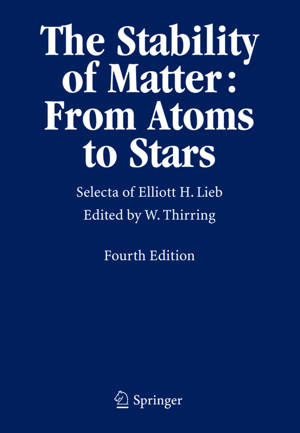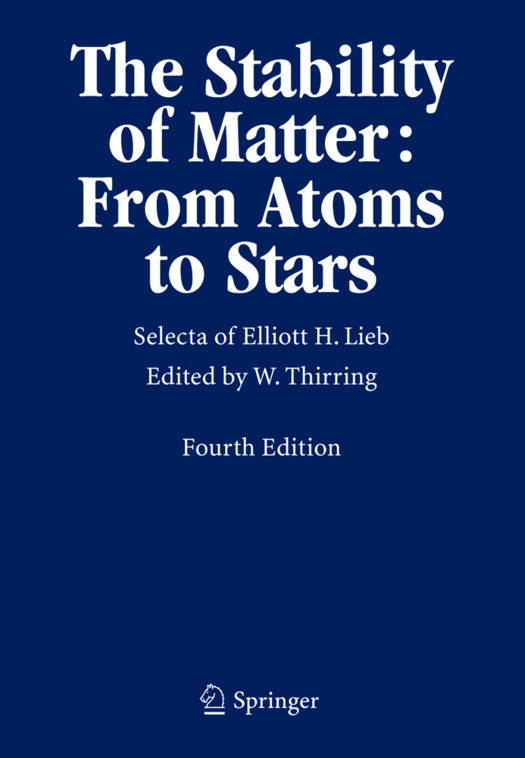
- Afhalen na 1 uur in een winkel met voorraad
- Gratis thuislevering in België vanaf € 30
- Ruim aanbod met 7 miljoen producten
- Afhalen na 1 uur in een winkel met voorraad
- Gratis thuislevering in België vanaf € 30
- Ruim aanbod met 7 miljoen producten
Zoeken
The Stability of Matter: From Atoms to Stars
Selecta of Elliott H. Lieb
North Atlantic Treaty Organization
Hardcover | Engels
€ 210,95
+ 421 punten
Omschrijving
This fourth edition of selecta of my work on the stability of matter contains recent work on two topics that continue to fascinate me: Quantum electrodynamics (QED) and the Bose gas. Three papers have been added to Part VII on QED. As I mentioned in the preface to the third edition, there must be a way to formulate a non-perturbative QED, presumably with an ultraviolet cutoff, that correctly describes low energy physics, i.e., ordinary matter and its interaction with the electromagnetic field. The new paper VII.5, which "quantizes" the results in V.9, shows that the elementary 'no-pair' version of relativistic QED (using the Dirac operator) is unstable when many-body effects are taken into account. Stability can be restored, however, if the Dirac operator with the field, instead of the bare Dirac operator, is used to define an electron. Thus, the notion of a "bare" electron without its self-field is physically questionable.
Specificaties
Betrokkenen
- Auteur(s):
- Uitgeverij:
Inhoud
- Aantal bladzijden:
- 932
- Taal:
- Engels
Eigenschappen
- Productcode (EAN):
- 9783540222125
- Verschijningsdatum:
- 29/11/2004
- Uitvoering:
- Hardcover
- Formaat:
- Genaaid
- Afmetingen:
- 168 mm x 244 mm
- Gewicht:
- 1519 g

Alleen bij Standaard Boekhandel
+ 421 punten op je klantenkaart van Standaard Boekhandel
Beoordelingen
We publiceren alleen reviews die voldoen aan de voorwaarden voor reviews. Bekijk onze voorwaarden voor reviews.











